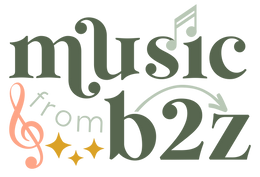Let’s be honest for a second. Decorating your music classroom is fun! We love a Pinterest-worthy setup—cohesive colors, adorable labels, a bulletin board that makes your teacher heart do a happy dance. And let’s not pretend the kids don’t notice it too. They walk in on the first day wide-eyed, instantly obsessed with anything bright, coordinated, or laminated. 😍
But here’s the thing: your decor can’t just be cute. It also needs to work. In a music classroom, your walls should be working FOR YOU—supporting your lessons, helping students build independence, and saving you from repeating the same directions 15 times a day. That’s where functional decor comes in—and yes, it can still be totally adorable.
🎯 Decor That Teaches With You (So You Don’t Have to Repeat Yourself 47 Times)
You probably love a good music pun poster (who doesn’t?), but if you’re going to use your precious wall space, it should earn its keep. Your decor should do more than just look cute—it should reinforce the concepts you’re teaching and give your students the tools they need to take charge of their own learning.
Here are some of my favorite music posters to keep up all year long:
-
Solfege hand signs – You’ll point to them constantly during warmups, echo singing, and melodic dictation activities. Bonus: students actually use them on their own.
-
Rhythm duration charts – Great during composition, centers, and especially when that one student insists a half note is three beats.
-
Tempo and dynamics posters – These stay up all year and get referenced way more than I ever thought they would. Especially during listening lessons and movement activities.
-
Instrument family visuals – Whether you're doing a focused unit or just sprinkling in vocabulary, having clear, student-friendly instrument posters makes a big difference.
This is the kind of music classroom decor that supports learning, not just vibes.

💡 How to Choose Decor That Works (and Still Looks Good)
You don’t have to sacrifice style to make things functional. You can absolutely have a cohesive theme or color palette and display content your students will actually use. Here’s what helps:
-
Keep it clean and simple.
Busy backgrounds and 12 fonts in one display? Not helpful. Make sure your visuals are easy to read from across the room. -
Group visuals by concept.
If students know the “rhythm wall” or the “solfege corner,” they’ll learn where to look without asking you every five minutes. -
Use visuals you’ll reference often.
If you’re teaching it, hang it up. If you’re not going to touch it until March... maybe it doesn’t need a spot in August.
🛠️ Function First, Aesthetic Second
Look, I’m not saying your room can’t be cute. You deserve a space you love teaching in. But when we prioritize functional classroom decor, we create an environment that:
✔️ Reinforces key concepts
✔️ Encourages student independence
✔️ Makes transitions smoother
✔️ Cuts down on the number of times we have to say, “Remember what a quarter note is?”
Your music classroom should work with you. Not just look good in a back-to-school Instagram post.

🎵 Ready to Decorate Smarter?
If you’re rethinking your setup or decorating your music room for the first time, start with visuals that teach. Want some ready-to-go resources? I’ve got music classroom decor designed specifically for elementary music—clean, functional, and created to actually be used.
Your classroom can look amazing and do some of the heavy lifting for you. Let's make it happen!


